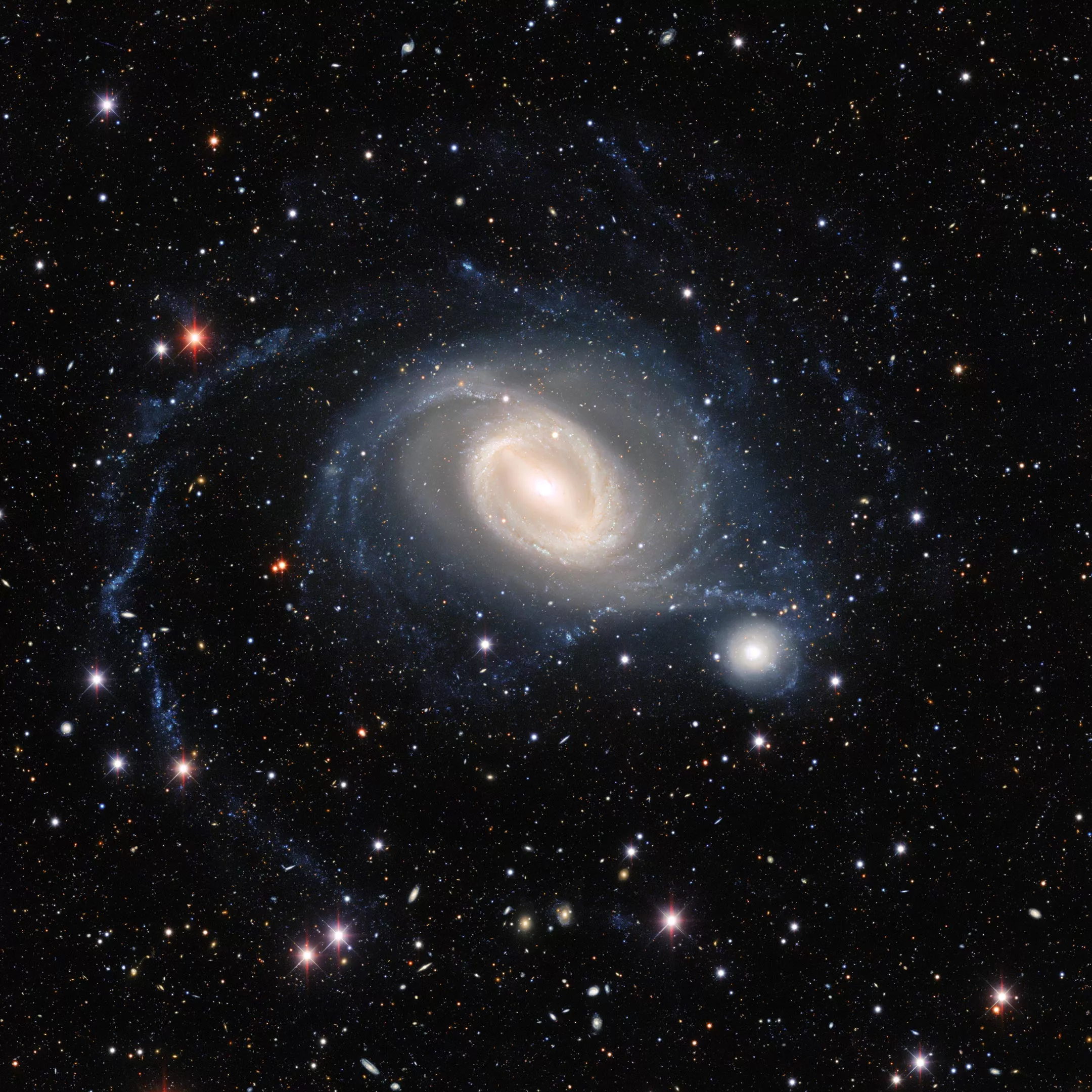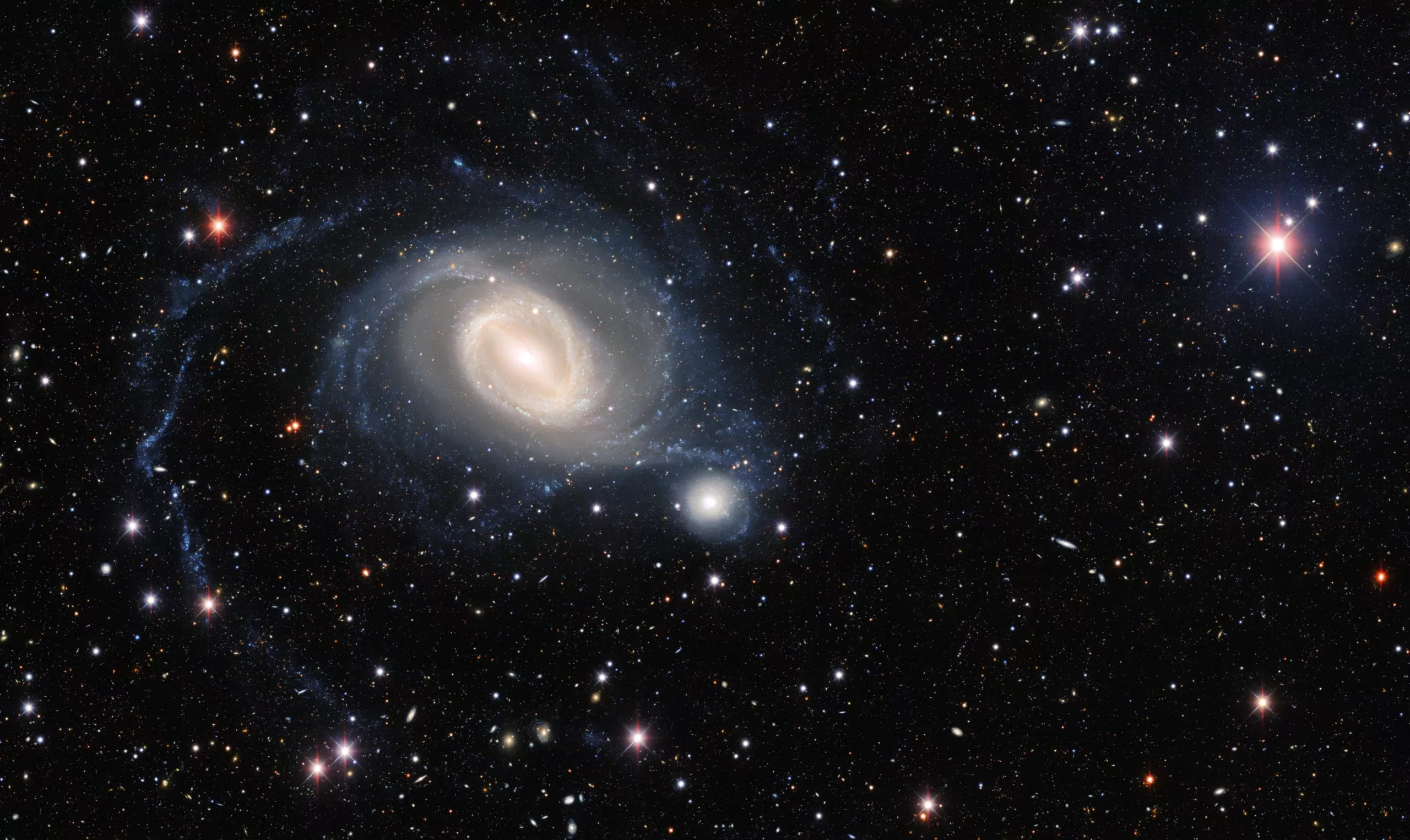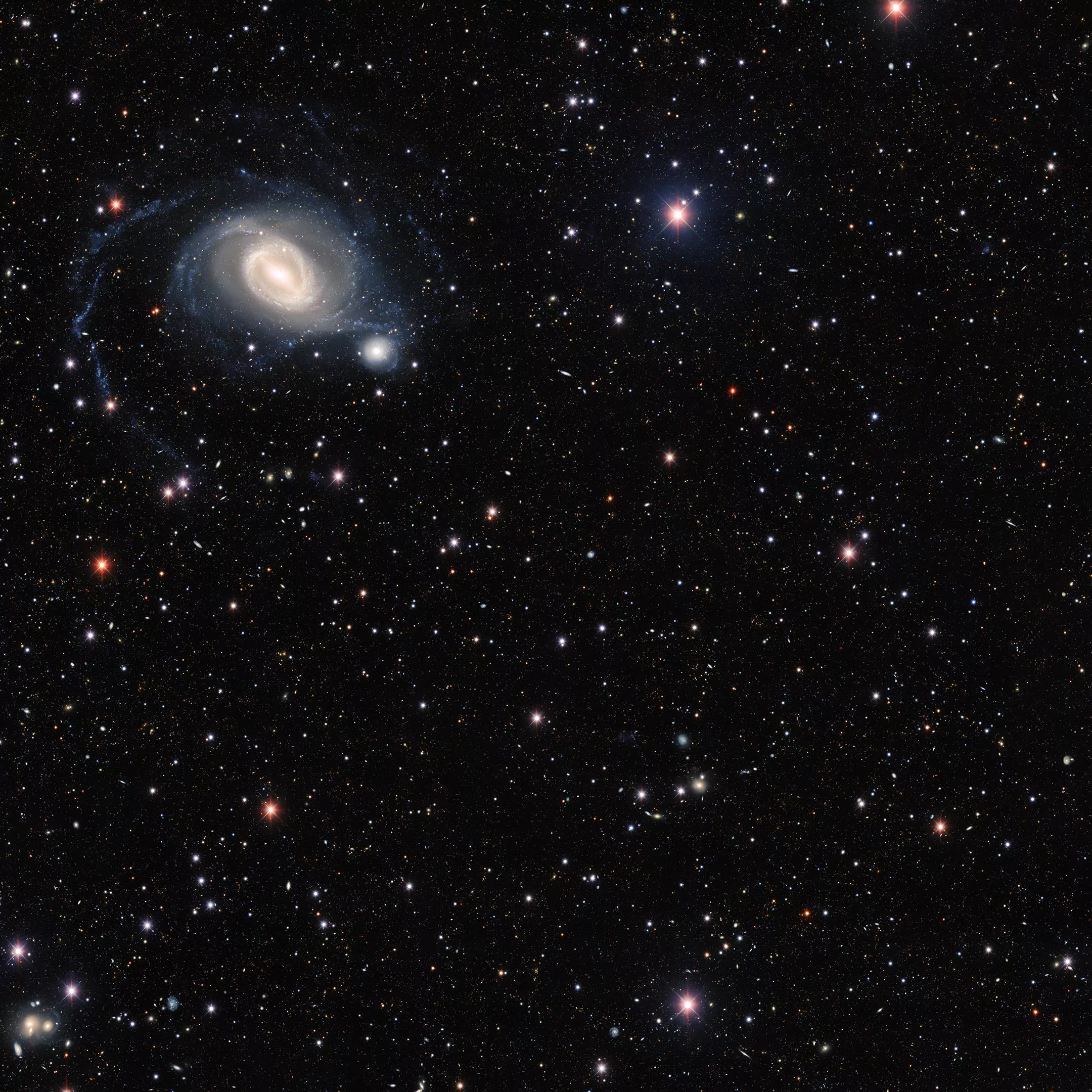*In the following picture, the interacting galaxies occupy the central position * of NGC 1512 and NGC 1510. This picture is from the dark energy camera (hereinafter referred to as DECAM) manufactured by the U.S. Department of energy. It is the most advanced 5.7 megapixel imager on the V í ctor M. Blanco 4m telescope of Cerro Tololo American Observatory in the noirlab program of the National Science Foundation.

NGC 1510
NGC 1512 has been merging with its smaller galaxy neighbors for 400 million years, and this long interaction has ignited wave after wave of star formation.
In this observation, the V í ctor M. Blanco 4m Telescope captured the rod spiral galaxy NGC 1512 and its small neighbor NGC 1510. In addition to revealing the intricate internal structure of NGC 1512, this image also shows that the outer tendrils of the galaxy are extending, as if to wrap its small partners. The starlight flow connecting the two galaxies is evidence of their gravitational interaction - a solemn and elegant connection that has lasted for 400 million years. The gravitational action of NGC 1512 and NGC 1510 affects the star formation rate of the two galaxies and distorts their shape at the same time. Eventually, NGC 1512 and NGC 1510 will merge into a larger galaxy - an example of a long galaxy evolution.

NGC 1512
These interacting galaxies are located in the direction of the clock constellation in the southern hemisphere, about 60 million light-years away from earth. The wide field of view of this observation shows not only the intertwined galaxies, but also the starry environment around them. The picture is filled with bright foreground stars in the Milky way, with more distant galaxies as the background.
This picture was taken by DECAM, one of the world's highest performance wide field imaging instruments. The instrument is located on the top of the V í ctor M. Blanco 4-meter telescope. Its favorable position enables it to collect starlight reflected by the telescope's 4-meter wide mirror. It is a huge, aluminum coated and accurately shaped glass, which is about the weight of a half truck. After passing through the optical interior of DECAM - including a nearly one meter wide correction mirror - the starlight is captured by a grid of 62 charge coupled devices (CCD). These CCDs are similar to the sensors in ordinary digital cameras, but they are much more sensitive. In addition, they allow the instrument to create detailed images of dim astronomical objects such as NGC 1512 and NGC 1510.

NGC 1512
Large astronomical instruments like DECAM are customized optical engineering masterpieces. It requires great efforts of astronomers, engineers and technicians to capture the first batch of images. With funding from the U.S. Department of energy (DOE) and the help of international partners, DECAM was built and tested at DOE's Fermi laboratory, where scientists and engineers built a "telescope Simulator" - a replica of the upper part of the V í ctor M. Blanco 4-meter telescope, which enabled them to thoroughly test DECAM before shipping it to Cerro Tololo, Chile.
DECAM was created for the dark energy survey (DES). It is reported that DES is a six-year observation activity (from 2013 to 2019), with the participation of more than 400 scientists from 25 institutions in seven countries. The international cooperative effort aims to map hundreds of millions of galaxies, detect thousands of supernovae and discover subtle patterns of the structure of the universe - all to provide much-needed details of mysterious dark energy, which is accelerating the expansion of the universe. Today, DECAM is still used by scientists from all over the world to do projects and continue its heritage of cutting-edge science.